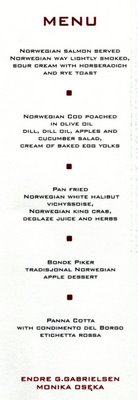A day of burgundies
Posted on 12 May 2009
Among Mielżyński’s latest agencies, Domaine Lucien Muzard & Fils from Santenay was new to me. This is red burgundy at its elemental, raw-fruity, croquant best, with healthy tannins and proud acidity. Thumbs up for the Bourgogne 2007 (good value) and the rustic Maranges 2007 which imperatively needs a grilled meat. More smoothness and elegance in the Santenay PC Clos de Tavannes 2007 and even more in the Volnay PC Chanlins 2007. The latter showed why Santenay will never be Volnay: quite fuller, with naturally ripe tannins and a sense of weight; another positive wine.
With Roger Belland we climb to another level. These are serious, concentrated, structured wines with a clear sense of minerality, in a style I’d define as intermediate: traditional elegance and airiness is coupled with very precise fruit, courtesy of the long cool fermentations. The Maranges PC La Fussière 2007 (another Maranges; more than I’ve tasted in many years) is peppery and tart-cherryish but the tannins are really nicely gauged. The Santenay PC Gravières 2007 showed a little simple and unexciting today, but the Pommard Les Cras 2007 (vines at 75 years) was really singing: dense and brooding, so sensual you almost forget about the underlying structure here. A rare example of a 2007 red that’s good to drink today. There was also the white Meursault PC Santenots 2007: grape-driven yet very structured and tight. Impressive but the price (60€ retail here in Poland) is really frightful.
The highlight of the tasting, for me, was Domaine Taupenot-Merme. Not only because of the very articulate and amiable Romain Taupenot, with whom I delighted in discussing the difference between pigeage and touillage (really geeky…), but also because of the more traditional, wonderfully elegant style of the wines. Pinot Noir allying power and finesse is an old cliché but these are really very complete wines. The Morey Saint-Denis 2007 (still a bit oaky) was brilliantly tannic, natural, effortless, with typicity and personality to spare. Corton Rognet 2006 is a big but unaggressive wine with that extra 2006 ripeness and warmth, though the finish is almost painfully dry today. For drinking soon, the Nuits-Saint-Georges PC Les Pruliers 2002 is almost perfect, with a lovely complex bouquet and that minor bit of greenness on the palate adding interest rather than upset; another very complete wine. Meanwhile, both the Mazoyères-Chambertin 2006 and Charmes-Chambertin 1998 should still wait. Both are statuesque, a little intellectual even, as befits a grand cru perhaps; both have a lot of tight earthy tannins on the end. But there were good surprises down the ladder too, with a vastly overperforming Saint-Romain 2006.

This tasting was a very welcome change of pace. I almost never buy burgundy, and consequently rarely drink it. It is a very complex region, requiring pretty much a full-time specialisation to properly apprehend. This tasting showed how much I’m missing, but also how challenging it can be to fully reset your mind and palate to this style of wine. Especially in the reds, there is something about the cool acidic taste of crunchy tannins on the front of the palate that’s quite a distinctive physical experience, unlike any ‘other’ wine out there.
And then (I have to mention this) there is the issue of prices. The cheapest wine on tasting was 12€ (Polish retail), and over half were above 25€. While I delighted in the premiers and grands crus here, I won’t be able to afford them any more frequently than before. So this tasting was pretty much a virtual exercise, and now it’s time to step down to earth to my usual fare of Riesling and Chianti.
Norwegian cod poached in olive oil;
dill, apples, cucumber and cream of egg yolks.

